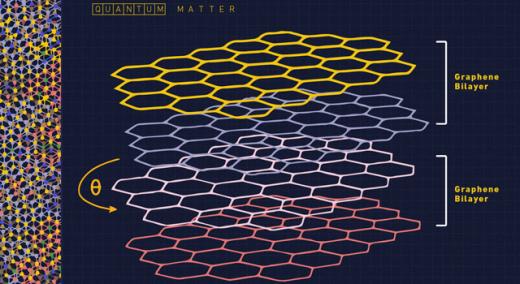A single atom-thick sheet of carbon known as graphene has remarkable properties on its own. But things can get even more interesting when you stack up multiple sheets.
|
ADVERTISEMENT |
When two or more overlying sheets of graphene are slightly misaligned—twisted at certain angles relative to each other—they take on a plethora of exotic identities. Depending on the twist angle, the materials known as moiré quantum matter can suddenly generate their own magnetic fields, become superconductors with zero electrical resistance, or conversely, turn into perfect insulators.

Illustration depicts two bilayers (two double layers) of graphene that the NIST team employed in its experiments to investigate some of the exotic properties of moiré quantum material. Inset at left provides a top-level view of a portion of the two bilayers, showing the moiré pattern that forms when one bilayer is twisted at a small angle relative to the other. Credit: B. Hayes/NIST.
…

Add new comment